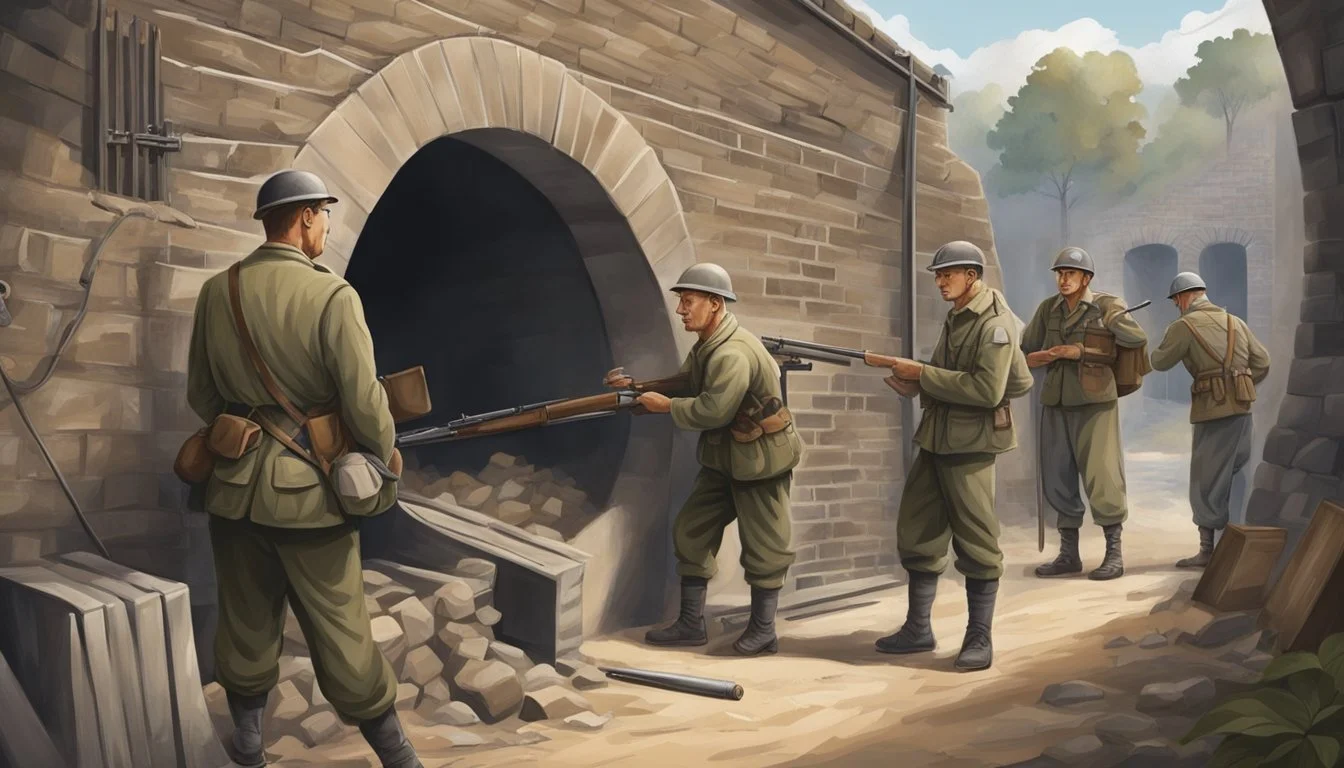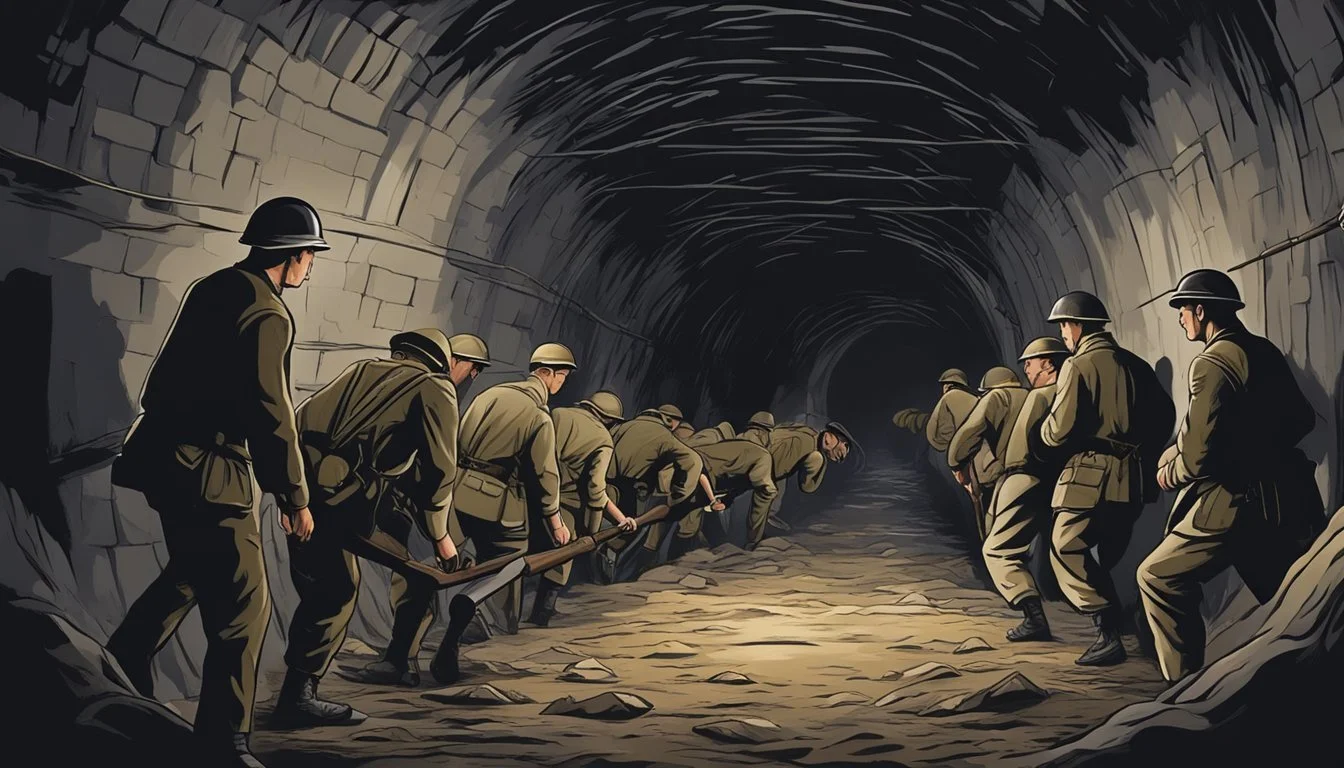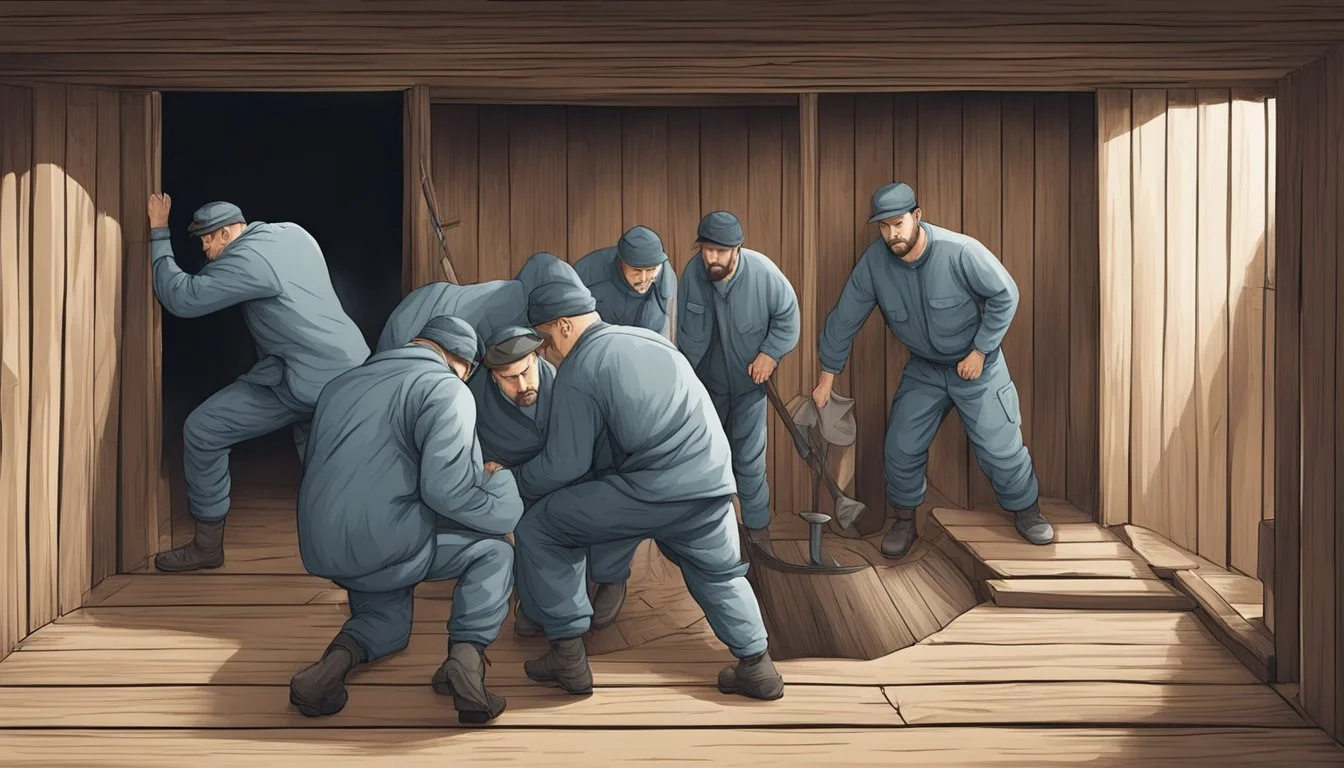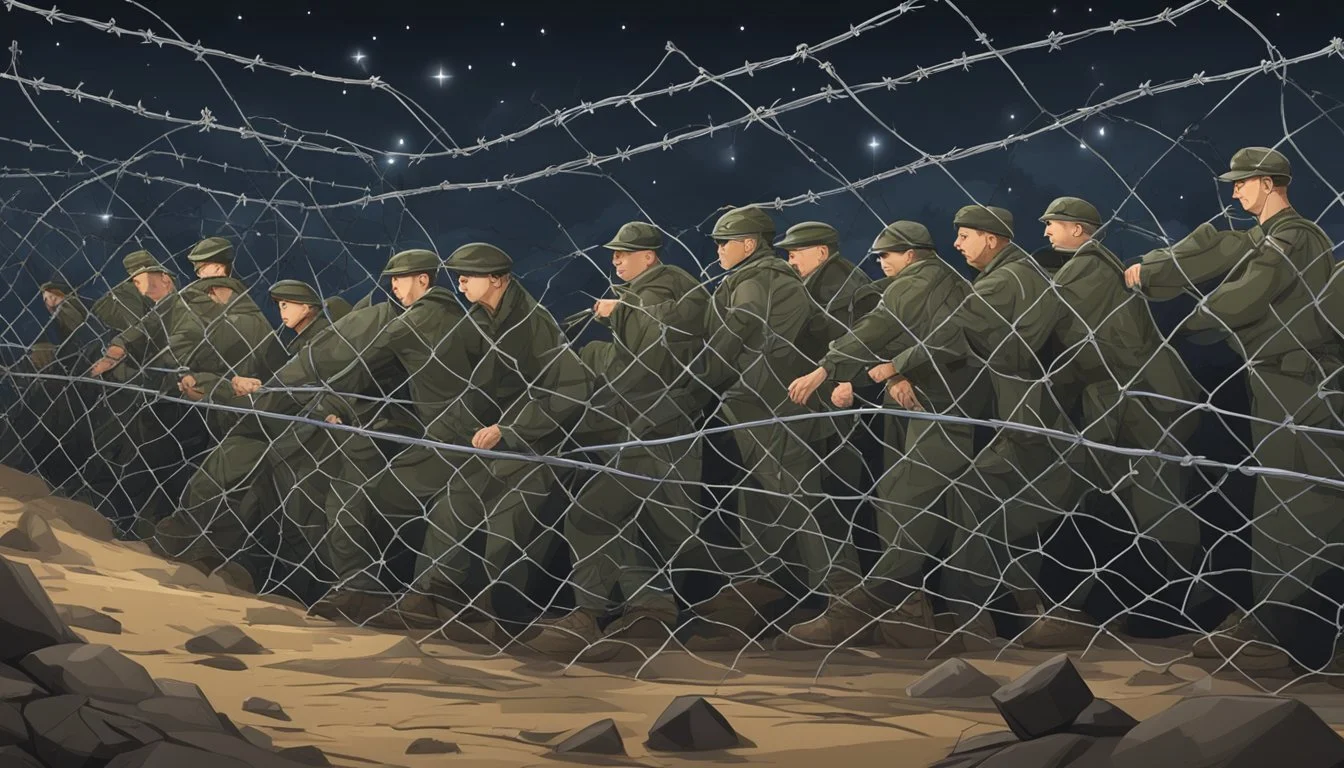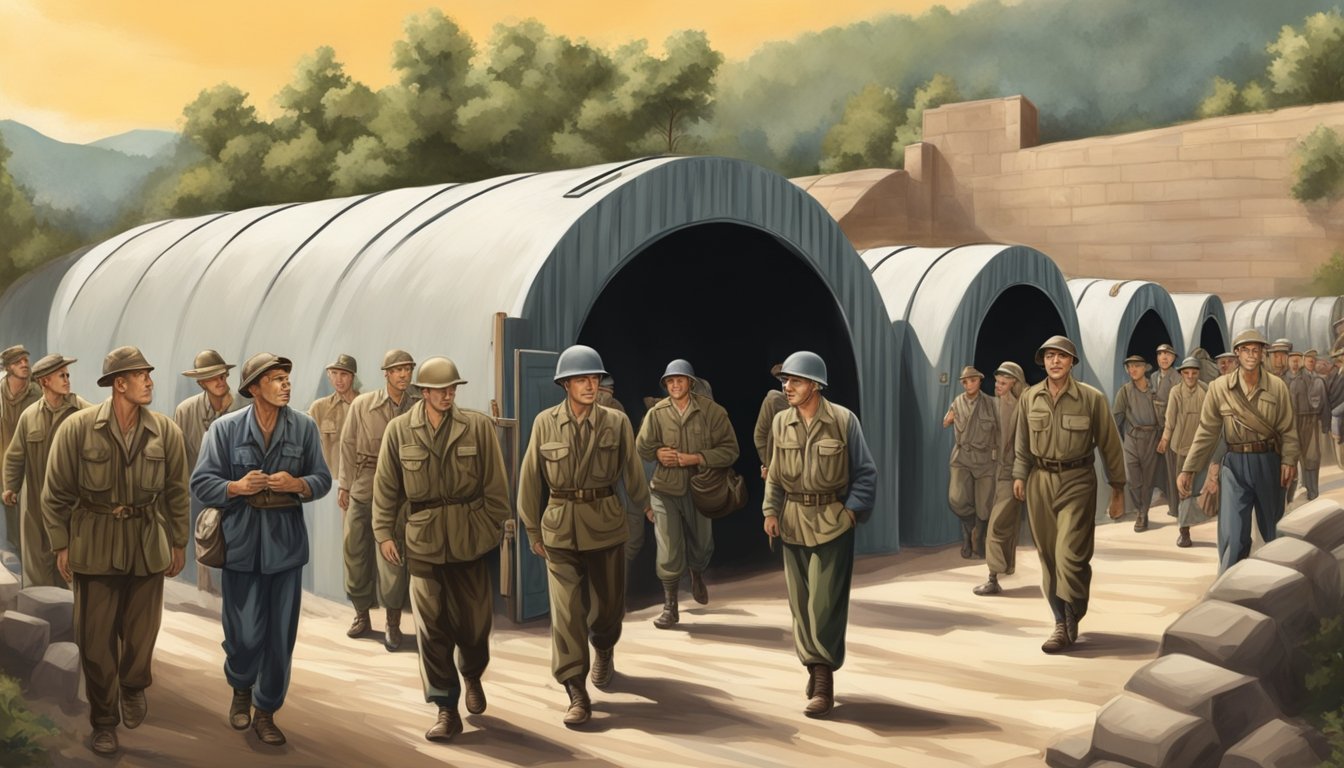The Genuine 'Great Escape': World War II POWs vs. Hollywood
Fact and Fiction in the Famous Prison Break
The 1963 film "The Great Escape" captivated audiences with its thrilling tale of Allied prisoners of war plotting an audacious breakout from a German camp. While the movie took creative liberties, it drew inspiration from real events that occurred at Stalag Luft III during World War II. The actual escape involved meticulous planning, ingenious problem-solving, and unprecedented cooperation among prisoners from various nations.
The true story behind the Great Escape is even more remarkable than its Hollywood portrayal. In March 1944, over 600 prisoners worked tirelessly for months to dig three tunnels, codenamed "Tom," "Dick," and "Harry." They faced numerous challenges, including disposing of excavated dirt and creating convincing forged documents for their planned escape.
On the night of March 24-25, 1944, 76 men managed to escape through tunnel "Harry" before the Germans discovered the breach. While the movie depicts motorcycle chases and dramatic encounters, the reality was far grimmer. Most escapees were quickly recaptured, and 50 were executed on Hitler's direct orders, a stark reminder of the high stakes and brutal consequences these brave men faced in their bid for freedom.
Historical Context of World War II POWs
During World War II, millions of soldiers were captured and held as prisoners of war (POWs) by both Allied and Axis powers. These prisoners faced harsh conditions in camps across Europe and Asia.
The Geneva Convention of 1929 set international standards for the treatment of POWs. However, adherence to these rules varied widely between nations.
Allied airmen shot down over Nazi-occupied territories were often sent to Luftwaffe-run camps like Stalag Luft III. These camps housed thousands of prisoners from various Allied nations.
POW camps served multiple purposes for captors:
Preventing enemy combatants from rejoining the fight
Gathering intelligence through interrogations
Using prisoners for labor
Many POWs attempted escapes, viewing it as their duty to continue resisting the enemy. These efforts ranged from individual breakouts to large-scale operations involving hundreds of prisoners.
The most famous POW escape occurred at Stalag Luft III in March 1944. Known as "The Great Escape," it involved months of planning and the construction of three tunnels.
While Hollywood later dramatized this event, the real escape had significant consequences. Of the 76 men who escaped, only three made it to safety. The Nazis executed 50 recaptured prisoners as a deterrent.
The True Story Behind 'The Great Escape'
The real 'Great Escape' took place at Stalag Luft III, a German prisoner-of-war camp, in March 1944. Allied airmen meticulously planned and executed a daring mass breakout.
Over 600 prisoners worked on the escape plan, with 200 digging three tunnels codenamed "Tom," "Dick," and "Harry." The prisoners used ingenious methods to dispose of dirt and create tools from scavenged materials.
On the night of March 24-25, 1944, 76 men escaped through tunnel "Harry" before it was discovered. The tunnel's exit emerged short of the forest's edge, slowing the escape process.
German patrols noticed the tunnel around 5 a.m., forcing the remaining prisoners to abandon their escape attempts. The Nazis immediately launched a massive manhunt to recapture the escapees.
Of the 76 who escaped:
3 made it to safety
23 were recaptured and returned to POW camps
50 were executed on Hitler's direct orders
The escape attempt had significant consequences. It tied up German resources and boosted Allied morale. However, the executions of recaptured officers sparked international outrage.
While the 1963 film "The Great Escape" dramatized events, it preserved the memory of those who risked everything for freedom. The movie's enduring popularity ensures their story continues to captivate audiences decades later.
Comparing Hollywood's Version to Historical Facts
The 1963 film "The Great Escape" took significant liberties with the true story of the 1944 prison break from Stalag Luft III. While the movie captivated audiences, it diverged from historical reality in several key aspects.
One major difference was the nationalities of the escapees. The film portrayed Americans as central figures, but in reality, no Americans participated in the actual escape. The operation was primarily carried out by British and Commonwealth prisoners.
The movie's dramatic motorcycle chase scene never occurred. Steve McQueen's character and his daring motorcycle stunts were purely fictional additions for entertainment value.
The film condensed the escape preparation timeline. In reality, the prisoners spent over a year meticulously planning and digging the tunnels. The movie compressed this into a much shorter timeframe.
Hollywood altered the escape's outcome for dramatic effect. The film showed more successful escapes than actually occurred. In truth, only three of the 76 escapees made it to freedom, while 50 were executed by the Nazis.
The movie downplayed the brutal consequences faced by recaptured prisoners. It glossed over the harsh reality of the executions ordered by Hitler in retaliation for the escape attempt.
Despite these inaccuracies, "The Great Escape" did capture the spirit of ingenuity and determination displayed by the real POWs in their audacious bid for freedom.
Key Figures in the Real 'Great Escape'
Roger Bushell, a South African-born RAF squadron leader, masterminded the escape operation as "Big X." His leadership and strategic planning were crucial to the ambitious undertaking.
Harry "Wings" Day served as the senior British officer at Stalag Luft III. He provided support and cover for the escape efforts while maintaining a facade of cooperation with German authorities.
Wally Floody, a Canadian RCAF pilot, earned the nickname "Tunnel King" for his expertise in mining and tunnel construction. His skills were invaluable in the creation of the escape tunnels.
Eric Williams and Michael Codner were the primary forgers. They created essential documents, including passes and identification papers, to aid the escapees once outside the camp.
John Dodge, an American-born British Army officer, played a key role in intelligence gathering and escape preparations. His fluency in German proved extremely useful.
James "Dixie" Deans coordinated the distribution of Red Cross parcels, cleverly using them to conceal escape materials and tools.
Squadron Leader Leonard Trent, a New Zealand pilot, was one of the last men to exit the tunnel during the escape. He was later recaptured but survived the war.
These men, along with countless others, demonstrated remarkable ingenuity, courage, and perseverance in their quest for freedom under extraordinarily challenging circumstances.
POW Camp Organization and Escape Preparation
Stalag Luft III, the German prisoner of war camp in Żagań, Poland, was designed to be escape-proof. Despite this, Allied prisoners managed to organize a complex system for planning and executing escapes.
The camp was divided into compounds, each housing hundreds of prisoners. Within these compounds, prisoners formed escape committees to coordinate efforts.
Key roles in the escape organization included:
Tunnelers: Dug underground passages
Forgers: Created fake documents and passes
Tailors: Altered uniforms to resemble civilian clothes
Intelligence: Gathered information on German patrols and schedules
Prisoners used ingenious methods to dispose of tunnel dirt, including dispersing it from trouser pockets while walking around the camp grounds. They also created makeshift tools and supports from bed boards and other materials.
Preparation for the escape was meticulous. Maps were drawn, civilian clothes were crafted, and German was practiced. The prisoners even made a pump to provide air to the tunnels during digging.
The scale of the operation was immense. Over 600 prisoners were involved in various aspects of planning and preparation. This level of organization was crucial to the eventual escape of 76 men in March 1944.
The Escape Plan
The prisoners at Stalag Luft III devised an intricate plan to break out of the camp. Their scheme involved digging tunnels, creating forged documents, and preparing disguises to evade recapture.
Tunnel Construction
The POWs dug three tunnels simultaneously, codenamed "Tom," "Dick," and "Harry." They used bed boards to shore up the walls and fashioned tools from stolen materials. The tunnels were dug 30 feet underground to avoid detection by seismograph equipment.
Prisoners dispersed the excavated sand by carrying it in small bags hidden in their trousers. They scattered it discreetly around the camp grounds during exercise periods.
Ventilation was crucial. The diggers installed a pump system made from empty milk cans to circulate air through the tunnels.
Forging Documents
A team of skilled forgers worked tirelessly to create convincing fake documents. They produced passports, identity cards, and travel permits for the escapees.
The forgers used paper from German documents and created stamps from boot heels. They even crafted official-looking letterheads and signatures.
Inks were made from melted crayons and boot polish. The team went to great lengths to ensure the documents would pass inspection if the escapees were questioned.
Clothing and Disguises
The prisoners carefully prepared civilian clothing to blend in after their escape. They unraveled blankets and sweaters to reknit into coats and suits.
Tailors among the POWs altered military uniforms to resemble civilian attire. They dyed clothes using chemicals from the camp's photography lab.
Escapees also created props like suitcases and briefcases to complete their disguises. Some even fashioned fake German military uniforms for added authenticity.
The attention to detail was meticulous, with prisoners studying German civilian fashions to ensure their outfits wouldn't arouse suspicion.
March 24, 1944: The Night of the Escape
On the night of March 24, 1944, 76 Allied airmen executed a daring escape from Stalag Luft III, a German prisoner-of-war camp in Sagan, Poland. The prisoners had spent months digging a 336-foot-long tunnel, codenamed "Harry," beneath the camp's perimeter.
As darkness fell, the escapees began to emerge from the tunnel's exit. They crawled through the snow-covered forest, carrying forged documents and civilian clothes. The plan was to disperse quickly and make their way to neutral or Allied-controlled territories.
The escape continued through the night, with prisoners exiting the tunnel at intervals. However, the operation hit a snag when the tunnel's exit was discovered to be short of the forest's edge, leaving the men exposed in open ground.
Despite this setback, 76 men managed to clear the wire before the alarm was raised. The camp guards discovered the tunnel shortly before dawn, bringing the escape to an end.
In the aftermath, an intense manhunt was launched across Germany and occupied Europe. Of the 76 escapees, 73 were eventually recaptured. In a tragic turn of events, 50 of the recaptured men were executed on direct orders from Hitler.
Only three men successfully evaded capture and made it to safety:
Two Norwegian pilots reached Sweden
A Dutch pilot made it to Gibraltar
The Great Escape stands as a testament to the ingenuity, courage, and determination of the Allied prisoners in the face of seemingly insurmountable odds.
Aftermath of the Escape
The aftermath of the "Great Escape" was marked by tragedy and repercussions for both the escapees and their captors. German authorities responded swiftly and harshly to the audacious breakout.
Casualties and Captures
Of the 76 prisoners who escaped Stalag Luft III, only three managed to reach safety. The vast majority were recaptured within days or weeks of the breakout. 23 were caught near the camp, while 47 were apprehended at various locations across Germany and occupied Europe.
The three successful escapees were:
Flight Lieutenant Per Bergsland (Norwegian)
Second Lieutenant Jens Müller (Norwegian)
Squadron Leader Roger Bushell (British)
Bergsland and Müller made it to Sweden, while Bushell reached Switzerland. Their journeys involved a combination of ingenuity, luck, and assistance from resistance networks.
Nazi Retaliation
Hitler was furious upon learning of the escape and initially ordered all recaptured prisoners to be shot. This order was later modified, but still resulted in a brutal response. On March 29, 1944, the Gestapo executed 50 of the recaptured escapees.
The executions were carried out in small groups, with the prisoners told they were being taken for further questioning. Instead, they were driven to remote locations and shot. This act was a clear violation of the Geneva Convention and was later prosecuted as a war crime.
The remaining survivors were sent to other camps or returned to Stalag Luft III. The escape attempt led to increased security measures at POW camps across Germany for the remainder of the war.
Memorializing the Event
The Great Escape has been commemorated in various ways since its occurrence in 1944. Museums and memorials play a crucial role in preserving the memory of this daring escape attempt.
At the site of Stalag Luft III in Żagań, Poland, a museum now stands to honor the prisoners and their incredible feat. Visitors can explore recreated barracks and tunnels, gaining insight into the conditions faced by the POWs.
The Commonwealth War Graves Commission maintains the Poznan Old Garrison Cemetery, where 48 of the recaptured escapees are buried. This site serves as a solemn reminder of the ultimate sacrifice made by these brave men.
Annual ceremonies and events take place to mark the anniversary of the Great Escape. These gatherings often include veterans, family members, and dignitaries paying their respects.
Books and documentaries continue to be produced, offering in-depth accounts of the escape and its aftermath. These works help educate new generations about this significant historical event.
The 1963 film "The Great Escape" has also played a role in keeping the story alive in popular culture, despite its fictionalized elements. It has introduced millions to the basic premise of the escape, sparking interest in the true story.
Influence on Popular Culture
The 1963 film "The Great Escape" significantly impacted popular culture, cementing the daring POW breakout in public consciousness. Its iconic scenes and characters became deeply ingrained in collective memory.
Steve McQueen's motorcycle chase sequence stands out as one of cinema's most memorable moments. The film's theme music, composed by Elmer Bernstein, gained widespread recognition and is still instantly recognizable today.
The movie inspired numerous references and parodies in subsequent films, television shows, and advertisements. Its influence extended to video games, with several titles based on the escape premise.
In the UK, "The Great Escape" became a holiday television staple. A 2006 poll ranked it as the third most popular family film for Christmas viewing, and the top choice among men.
The film's enduring popularity led to increased interest in the actual historical events. It sparked curiosity about the real POWs involved in the escape and their individual stories.
"The Great Escape" also influenced fashion, with Steve McQueen's rugged style becoming emblematic of 1960s cool. His character's leather jacket and motorcycle became iconic symbols of rebellion and adventure.
Historiography and Continuing Research
The historical study of the Great Escape has evolved significantly since the events of 1944. Early accounts relied heavily on eyewitness testimonies from former prisoners of war.
Paul Brickhill's 1950 book "The Great Escape" provided a comprehensive narrative that became the basis for much subsequent research. His work combined personal experience with interviews of other escapees.
Academic historians later expanded on Brickhill's foundation. They incorporated German archival sources and conducted more rigorous analysis of Allied records.
Recent scholarship has focused on previously overlooked aspects:
The roles of non-British prisoners in planning and execution
Experiences of recaptured escapees in German custody
Long-term psychological impacts on survivors
Archeological excavations at the former Stalag Luft III site have yielded new physical evidence. These findings help corroborate and refine existing historical accounts.
Digitization efforts are making primary source documents more accessible to researchers worldwide. This has enabled fresh perspectives and international collaboration.
Oral history projects continue to record testimonies from surviving veterans and their families. These accounts provide valuable insight into the personal experiences of those involved.
As the event recedes further into history, scholars are increasingly examining its cultural impact and memorialization. This includes analysis of how the Hollywood film shaped public perceptions of the escape.



